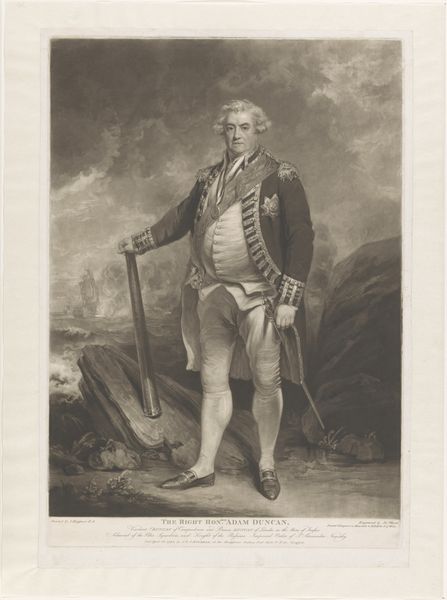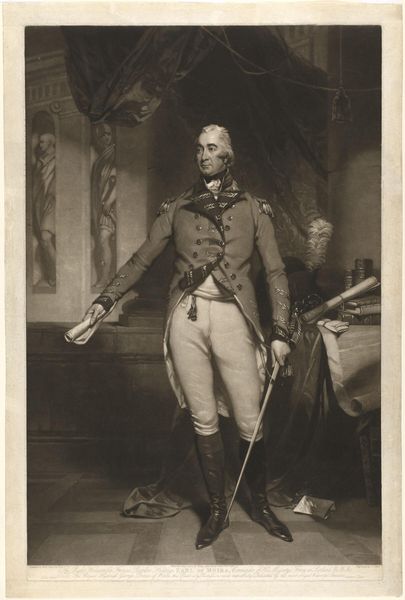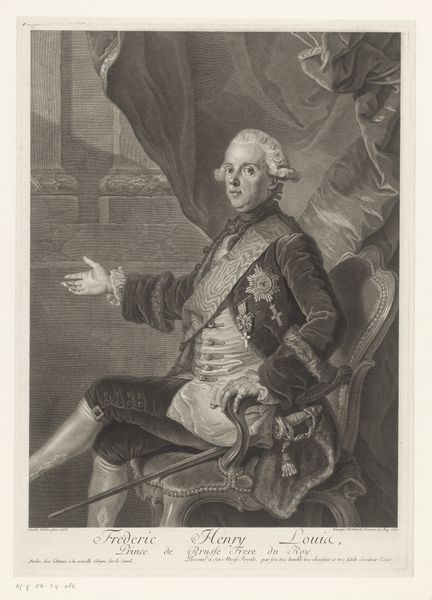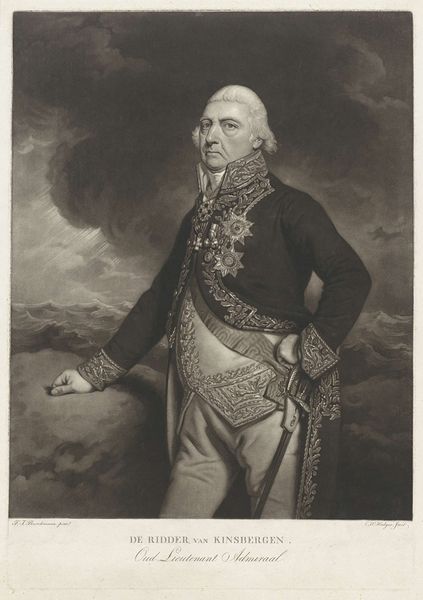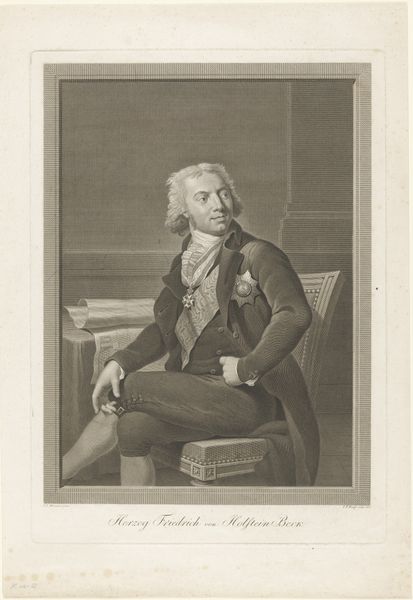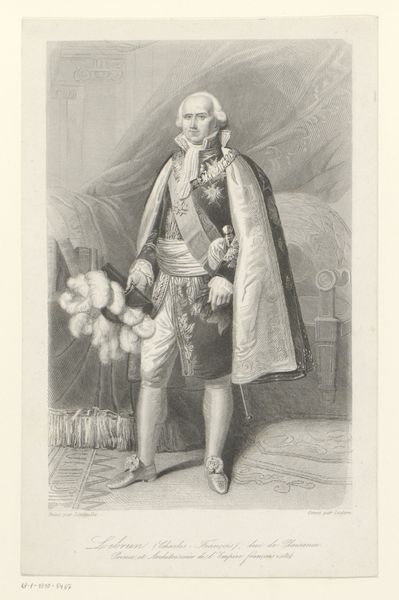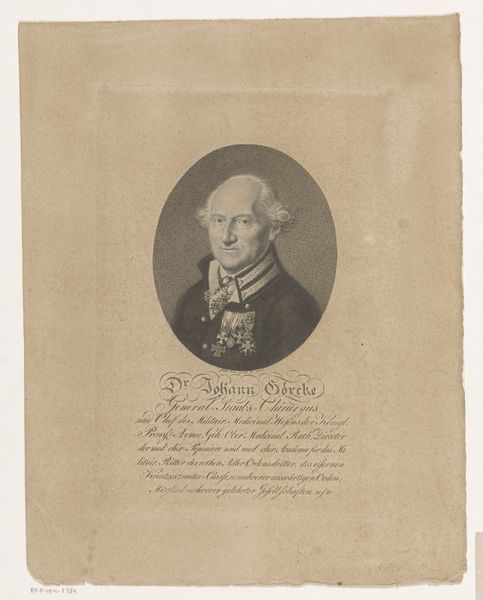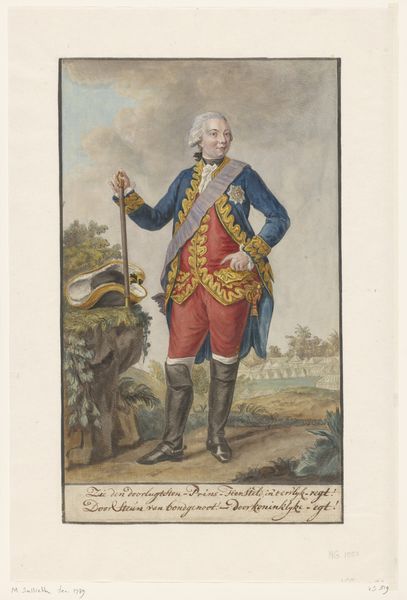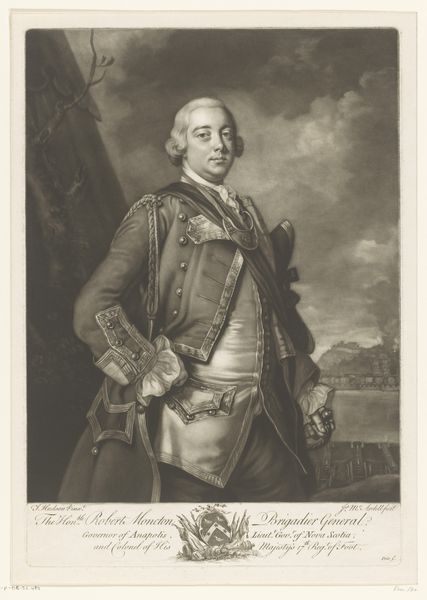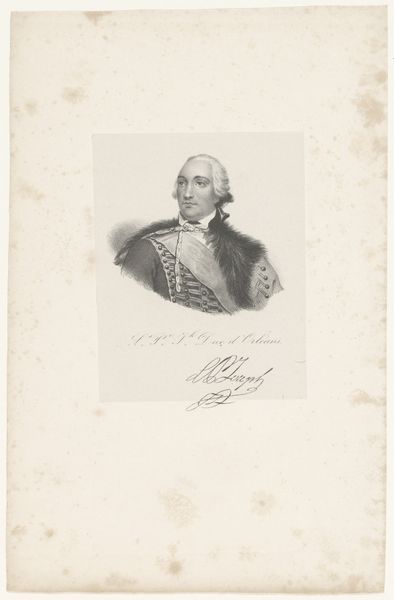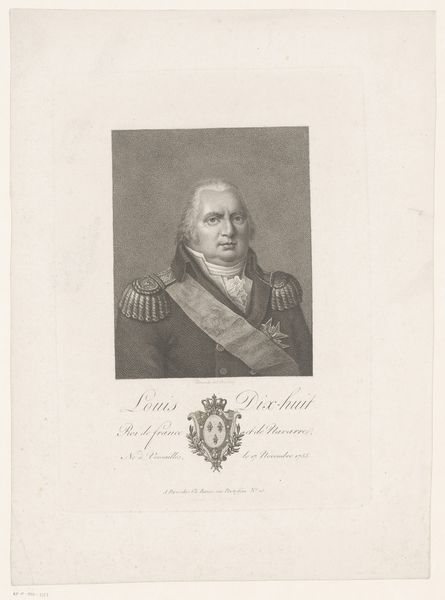
print, engraving
#
print photography
#
neoclacissism
# print
#
history-painting
#
engraving
Dimensions: height 506 mm, width 383 mm
Copyright: Rijks Museum: Open Domain
Curator: I find this work by Benjamin Smith from 1798 incredibly compelling. It is titled "Portret van Charles Cornwallis" or "Portrait of Charles Cornwallis" and made using engraving, a printmaking technique. Editor: The way the light falls on Cornwallis's face, it almost creates a halo effect. The composition is very balanced, though it is quite formal. Almost regal, in a stiff way. Curator: That's fitting given that Charles Cornwallis held significant power at the time as Lieutenant General and Governor General in the British government. He was a central figure in both the American Revolutionary War and later in colonial India. The artist probably created this in his honour. Editor: You can certainly read the markers of power—the confident stance, the luxurious fabrics, the elaborate sash. He’s also placed in this strange, craggy landscape. The background feels unfinished. The texture gives it some life but feels somehow unpolished compared to Cornwallis himself. Curator: It speaks to how history and memory were constructed at the time. He is a representation of British colonial might. And the background might not be viewed as so important, as much as what Charles meant for his people. His history became everyone else's. Editor: So, in a way, it's almost a propagandistic piece? The textures of his coat and sash really catch the eye, it must be an intended message by the artist. Everything in service to glorifying Cornwallis. The landscape behind almost irrelevant in comparison. Curator: Perhaps, but it is much more complex than we think. While on one hand, Smith is producing a seemingly celebratory piece, we cannot forget how Cornwallis surrendered to George Washington in 1781. So while being one of the major figure heads of Britain, he had faced much shame, maybe more than honour. Editor: Looking at the piece again, it certainly holds more layers of intrigue than previously noticed. Thank you for your insight. Curator: And thank you for sharing a formal analysis, teasing out subtleties that would otherwise pass by unnoticed.
Comments
No comments
Be the first to comment and join the conversation on the ultimate creative platform.
